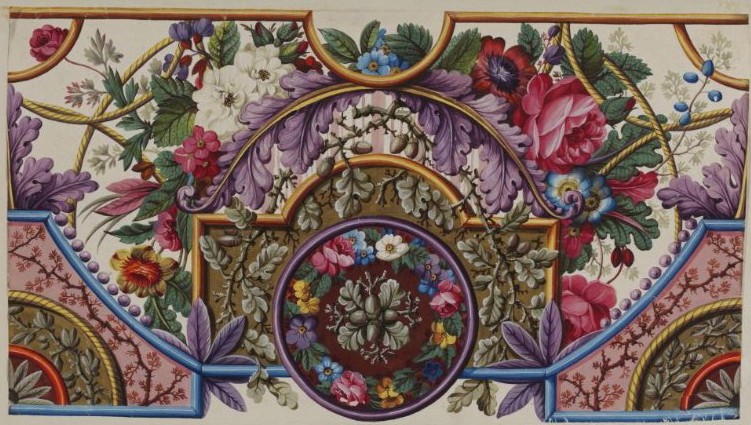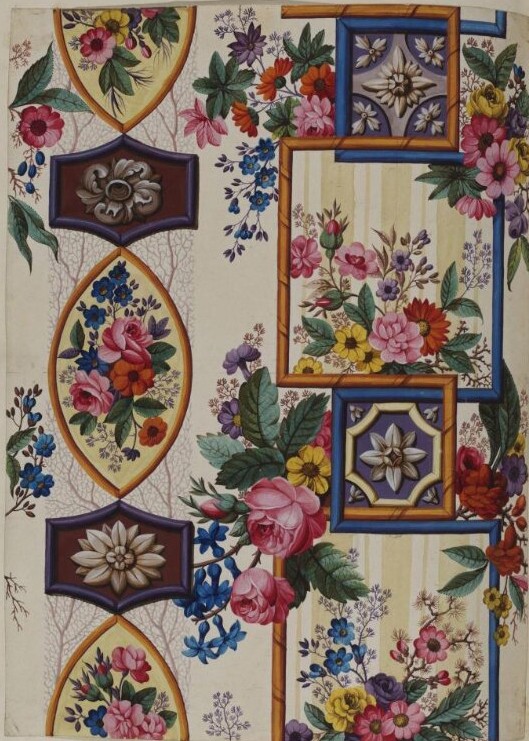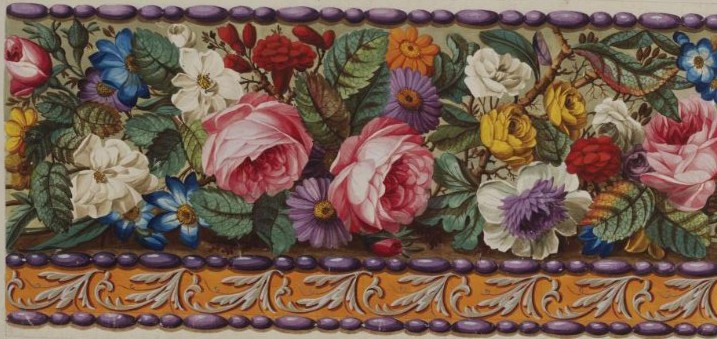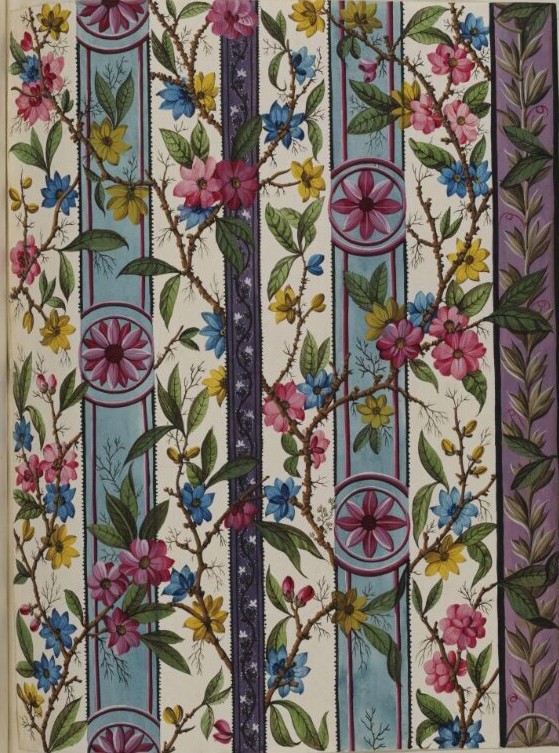Textiles and the Triplett Sisters
Revised Dates on Early English Printing

Continued research on the new acquisition quilts caused additional research on early English textile printing which supports earlier dates on certain printing milestones. The date of 1815 is cited frequently for designs on cotton with some complexity. However, I would argue the date should be earlier.

In 1752 copper plate printing was developed in Ireland, and quickly spread to England. Prints from copper plates produce the finer details needed to create complex designs. Also of note, in 1774, parliament passed the “United Kingdom of the Realm Act” which required foreign cottons to be heavily taxed upon import into England. English printed cottons intended for export from England would be marked with “the three blue threads” and be refunded the tax in the colonies. If you have antique fabric with three blue threads in the selvedge, then it was likely printed in England between 1774-1811. (Please see our book Chintz Quilts from the Poos Collection for more details.) The border by Richard Ovey in the last blog has those three blue threads.

William Kilburn was another designer who created furnishing fabrics. Kilburn was born in Dublin and apprenticed to a cotton and linen printer in Lucan. He moved to London and began selling designs to various calico printers, botanists, and print shops. Kilburn first managed and then purchased a calico-printing factory in Surrey where his muslin chintz sold for about a guinea (about $170US today) a yard. Not surprisingly his brilliant designs were quickly stolen and/or copied and sold on cheaper, coarser fabric at 2/3rds the price. The copies of his fabrics appeared within 10 days of Kilburn’s fabrics first appearance at Brown, Rogers, & Co, the wholesale drapers who were proprietors of most of his textile designs. So, in 1787 he petitioned parliament to protect the copyright of designs.

By 1790, the list of calico printers and furnishing printers in England was over a hundred. Newspaper articles listed dividends paid by various calico printers. A few articles even describe new copperplate designs produced by calico printers. Sadly, in 1790 the newspaper also listed the numerous calico printer bankruptcies and printing grounds for sale. These facts as well as existing textiles place the production of fine English calico and furnishing fabrics potentially 30 years earlier.

